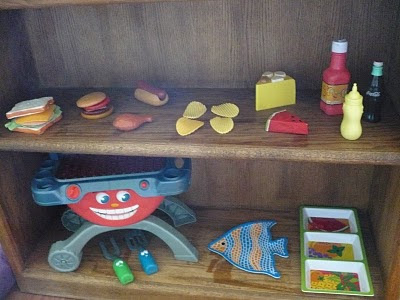SENSE OF SELF
- Expressing Initiative
- Distinguishing Self from Others
- Solving Problems Encountered in Exploration and Play
- Doing Things for One's Self
- Forming an Attachment to Primary Caregiver
- Building Relationships with Other Adults
- Building Relationships with Peers
- Expressing Emotions
- Showing Empathy toward the Feelings and Needs of Others
- Playing with Others
- Imitating and Pretending
- Exploring Building and Art Materials
- Responding to and Identifying Pictures and Photographs
- Moving Parts of the Body (turning head, grasping, kicking)
- Moving the Whole Body (rolling, crawling, cruising, walking, running, balancing)
- Moving with Others
- Feeling and Experiencing Steady Beat
- Listening and Responding
- Communicating Non Verbally
- Participating in Two Way Communication
- Speaking
- Exploring Picture Books and Magazines
- Enjoying Stories, Rhymes, and Songs
- Experiencing "More"
- Experiencing One to One Correspondence
- Experiencing the Number of Things
- Exploring Objects with One's Hands, Feet, Mouth, Eyes, Ears, and Nose
- Discovering Object Permanence
- Exploring and Noticing How Things are the Same or Different
- Exploring and Noticing the Location of Objects
- Observing People and Things from Various Perspectives
- Filling and Emptying, Putting In and Taking Out
- Taking Things Apart and Putting Together
- Anticipating Familiar Events
- Noticing the Beginning and Ending of Time Intervals
- Repeating an Action to Make Something Happen Again: Experiencing Cause and Effect
- Listening to Music
- Responding to Music
- Exploring and Imitating Sounds
- Exploring Vocal Pitch Sounds











 There's a Jungle in our Classroom!
There's a Jungle in our Classroom!
 Oragami Red Pariot in the Branches of a Tree.
Oragami Red Pariot in the Branches of a Tree.


















 Our Dolphin hanging in the classroom.
Our Dolphin hanging in the classroom. Our Star Fish hanging in the classroom.
Our Star Fish hanging in the classroom. Our Shark hanging in the classroom.
Our Shark hanging in the classroom. Sand Toys for our sand pile outside.
Sand Toys for our sand pile outside.














